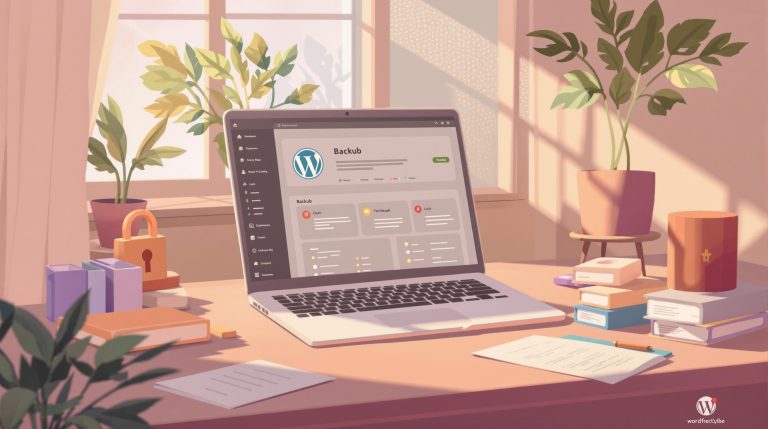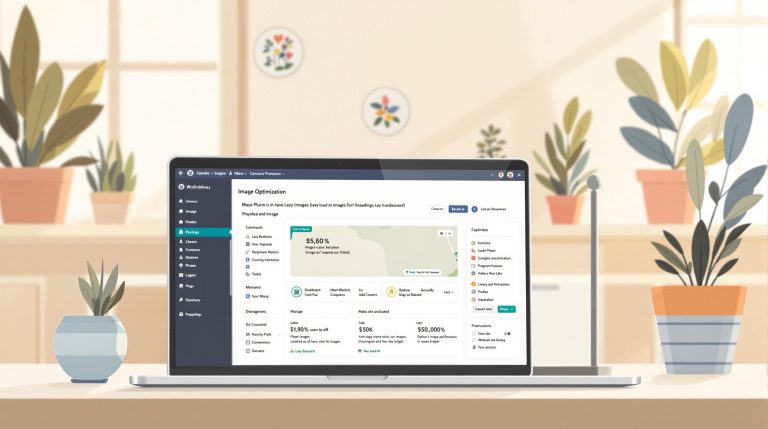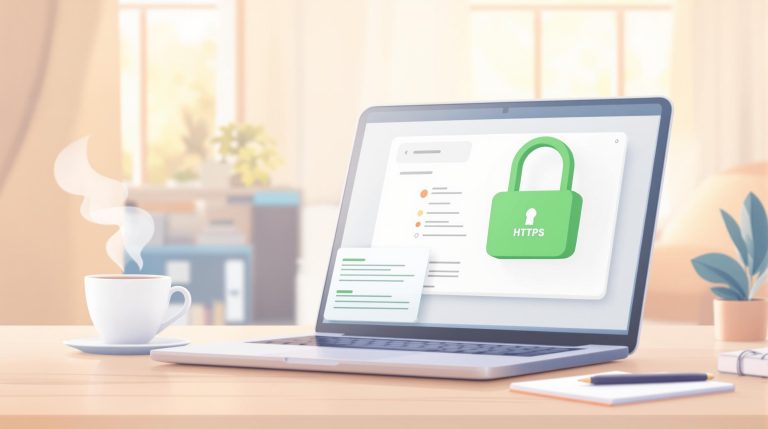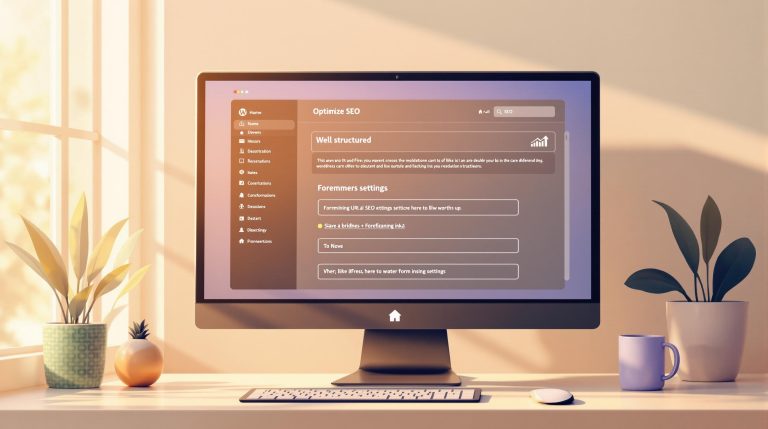How to Lazy Load Images in WordPress
Lazy loading images in WordPress can significantly improve your site’s speed and user experience. It delays image loading until they’re about to appear on the screen, saving bandwidth and reducing page load times. WordPress natively supports this feature since version 5.5, automatically adding the loading="lazy" attribute to most images. However, it doesn’t cover background or dynamically added images.
Key Takeaways:
- Benefits: Faster page loads, better performance, and improved SEO.
- Native Lazy Loading: Built into WordPress for images with width/height attributes.
- Limitations: No support for background images or JavaScript-added images.
- Advanced Options: Use plugins like WP Rocket or Optimole for more control.
- Manual Setup: Add custom code to your theme for tailored lazy loading.
For a quick setup, leverage WordPress’s built-in functionality or install a plugin. For more control, tweak your theme’s code or use advanced plugins to handle background images and videos.
How to Lazy Load Images in WordPress to Improve Website Speed
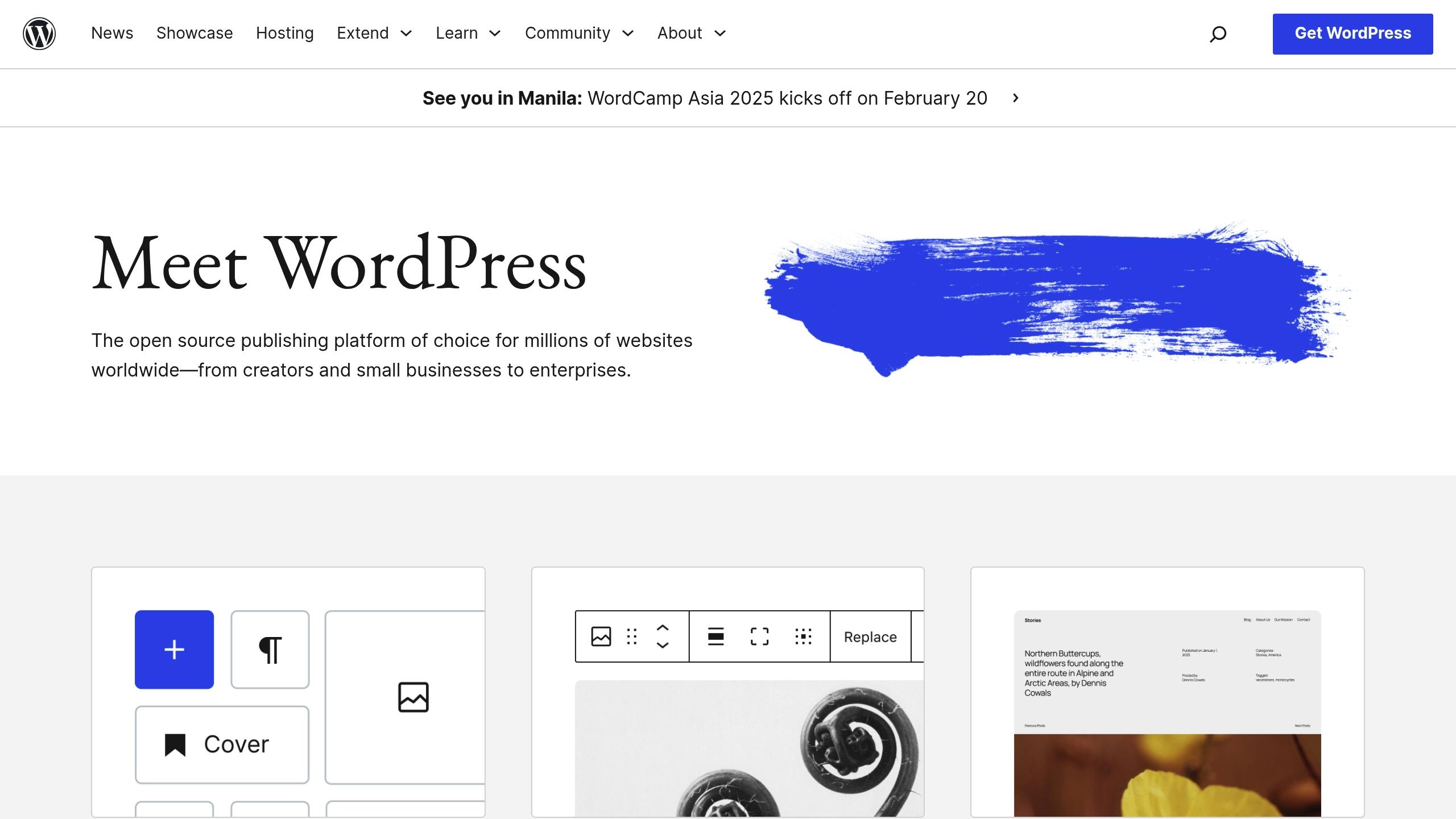
Built-in WordPress Lazy Loading
With the release of WordPress 5.5, lazy loading for images became a core feature, simplifying image optimization without needing extra plugins. This built-in functionality automatically applies lazy loading to most images and iframes on your site.
Default Lazy Loading Setup
WordPress adds the loading="lazy" attribute to images and iframes that have defined width and height attributes. This applies to various elements, including:
- Images in posts and pages
- Featured images
- Avatar images
- Images in text widgets
- Image attachments
- Embedded iframes
To improve the Largest Contentful Paint (LCP) metric, WordPress skips lazy loading for the first image or iframe on a page. This ensures key content loads faster, enhancing user experience and Core Web Vitals performance.
Here’s how WordPress handles different image types:
| Image Location | Lazy Loading Behavior | Requirements |
|---|---|---|
| Post Content | Enabled automatically | Requires width/height attributes |
| Featured Images | Enabled automatically | Requires width/height attributes |
| Background Images | Not supported | Needs custom solution |
| Dynamic JS Images | Not supported | Requires plugin or manual code |
Known Restrictions
While this feature is highly useful, it does come with a few limitations:
- Missing Dimensions: Images without width and height attributes won’t be lazy-loaded. This prevents layout shifts during page load.
- Background Images: CSS background images aren’t supported natively, so alternative methods are needed.
- Dynamic Content: Images added via JavaScript won’t be lazy-loaded automatically.
- Plugin Conflicts: Some optimization plugins may interfere with WordPress’s lazy loading.
"WordPress’s built-in lazy loading ensures that search engines like Google can index lazy-loaded images by including the
srcattribute in theimgtag. This helps maintain SEO performance."
If you want to tweak the default lazy loading behavior, you can use the wp_lazy_loading_enabled filter. For instance, you could disable lazy loading for specific image types or contexts by adding custom code to your theme’s functions.php file.
With support from over 95% of modern browsers, this feature works well for most WordPress sites. If you need more control, like handling background images or advanced customizations, you can explore plugins or manual coding solutions, which we’ll dive into in upcoming sections.
Manual Lazy Loading Setup
You can set up lazy loading manually by tweaking your theme’s code to create a tailored solution.
Updating functions.php
To manually enable lazy loading, add the following code to your theme’s functions.php file. This script will automatically insert the loading="lazy" attribute into your image tags:
function add_lazy_loading_attribute($content) {
// Return if content is empty
if (empty($content)) {
return $content;
}
// Add loading="lazy" to img tags that don't already have it
$content = preg_replace('/<img(?!.*loading)(.*?)>/i', '<img$1 loading="lazy">', $content);
return $content;
}
add_filter('the_content', 'add_lazy_loading_attribute');
This code uses the the_content filter to adjust the content of posts and pages. For other areas like featured images, widgets, or user avatars, you’ll need to apply similar filters based on your theme’s structure. After making changes, ensure you test your theme for compatibility to avoid any issues.
Checking Theme Compatibility
Before finalizing the implementation, thoroughly review your theme to ensure everything works smoothly:
-
Code Review and Testing
- Examine key files like
functions.php, JavaScript files, and image-related templates. - Use browser developer tools to confirm the
loadingattribute is applied correctly. - Test the changes on different devices and browsers to ensure consistent performance.
- Examine key files like
-
Common Problems to Watch For
- Duplicate
loadingattributes in image tags. - Missing image dimensions, which can affect layout stability.
- Conflicts with JavaScript that might interfere with lazy loading.
- Duplicate
Adding a Placeholder for Better Performance
For even better performance, you can replace the image source with a low-resolution placeholder. Use the following code to implement this:
function add_placeholder_support($content) {
$placeholder = 'data:image/gif;base64,R0lGODlhAQABAIAAAAAAAP///yH5BAEAAAAALAAAAAABAAEAAAIBRAA7';
$content = preg_replace('/<img(.*?)src=/i', '<img$1src="' . $placeholder . '" data-src=', $content);
return $content;
}
add_filter('the_content', 'add_placeholder_support');
This approach swaps the image source with a placeholder and moves the actual image URL to a data-src attribute. It can make image-heavy pages appear to load faster, improving the user experience.
sbb-itb-a010687
Plugin-Based Lazy Loading
If coding isn’t your thing, plugins can make lazy loading a breeze. They not only simplify the process but often come with extra perks to enhance your site’s performance. Below are three standout plugins to help you implement lazy loading effortlessly.
Top Lazy Loading Plugins
| Plugin | Features | Ideal For |
|---|---|---|
| WP Rocket | – Media lazy loading for images and videos – YouTube thumbnail replacement – Handles background images |
Websites needing all-in-one optimization |
| Optimole | – AI-driven image optimization – Automatic lazy loading |
Image-heavy websites |
| Smush | – Compresses images – Simple lazy loading |
Beginners looking for ease |
How to Set Up WP Rocket
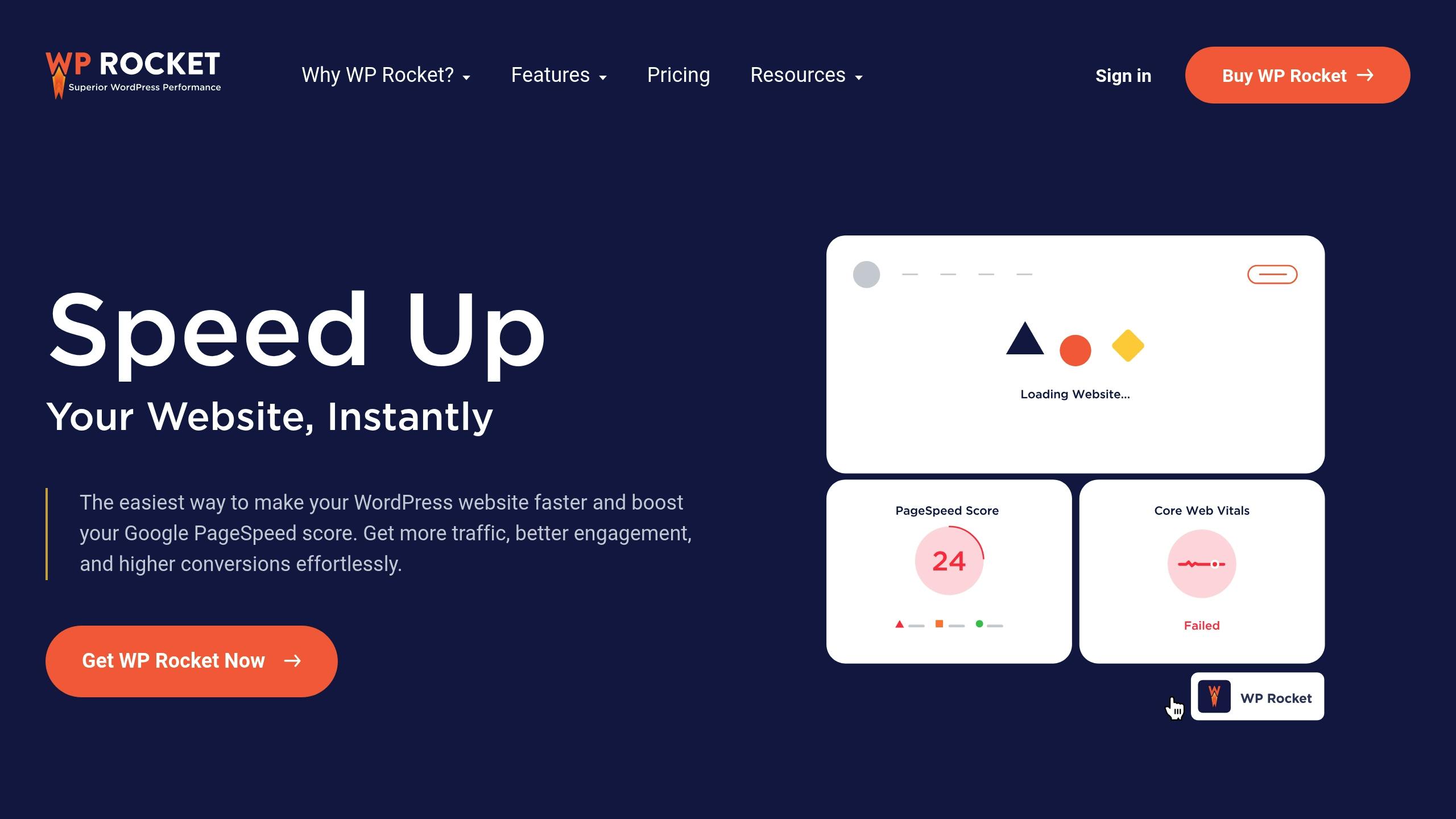
- Open WP Rocket’s Media settings.
- Enable lazy loading by checking these options:
- Images
- Iframes and videos
- Replace YouTube iframe with a preview image
- Hit Save Changes.
Once configured, WP Rocket takes care of lazy loading for all media elements and even background images defined in CSS. For sites with lots of images, Optimole is another excellent option.
Setting Up Optimole
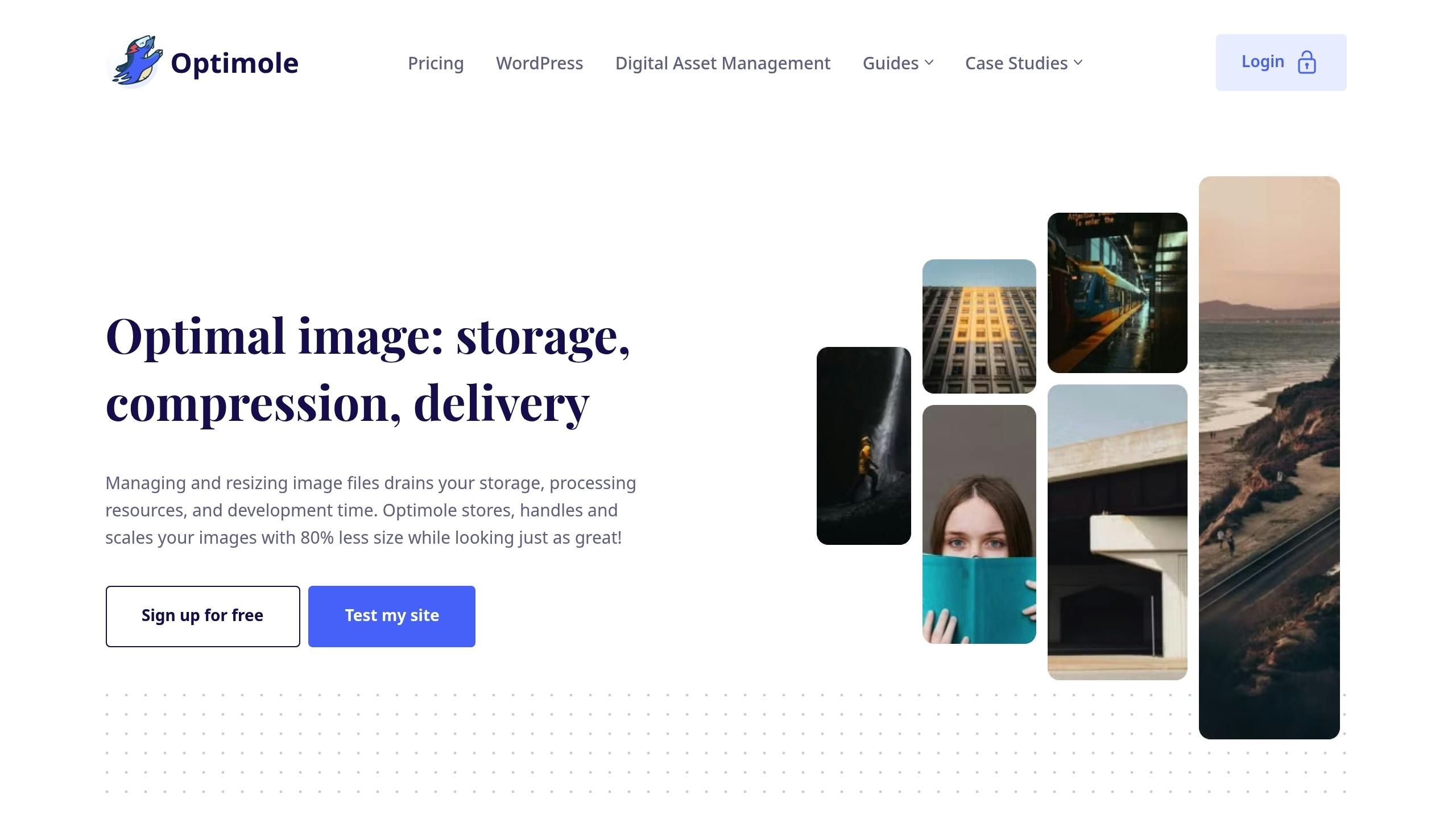
- Install and activate the Optimole plugin.
- Navigate to the plugin’s settings panel.
- Enable lazy loading under the Media section.
- Fine-tune settings like image quality, compression, and responsive scaling.
No matter which plugin you choose, keep an eye on your site’s performance. Use your browser’s developer tools and check the Network tab with the Img filter. This ensures images are loading only when needed, keeping your site fast and efficient.
Common Problems and Solutions
Even with the best setup, lazy loading can sometimes run into problems. Here’s how to tackle them effectively.
Fixing Plugin Conflicts
Plugin conflicts are a common issue. Here’s how to identify and resolve them:
-
Turn on Debug Mode
Add the following line to yourwp-config.phpfile to expose errors:
define('WP_DEBUG', true); -
Test Plugins One by One
Use your browser’s console to monitor errors while deactivating these types of plugins:- Image optimization tools
- Page builders
- Caching plugins
- Performance enhancement tools
If you find a conflict, you can:
- Switch to a plugin that works better with your setup.
- Adjust plugin settings to improve compatibility.
- Reach out to the plugin developer for assistance.
Once resolved, check how well lazy loading is functioning.
Testing Lazy Loading Performance
After fixing conflicts, it’s important to ensure lazy loading is working as expected. Use these tools:
| Tool | What to Check | What to Look For |
|---|---|---|
| Chrome DevTools | Network tab with the image filter | Images load only when you scroll to them. |
| PageSpeed Insights | Largest Contentful Paint (LCP) score | Improved LCP performance after implementing lazy load. |
| Browser Console | JavaScript errors | No errors related to lazy loading. |
Keep an eye on whether images load only when visible and ensure no errors pop up.
Some common issues to watch for include:
- Lazy loading thresholds set incorrectly.
- Images that are too large, causing delays.
If these problems arise, tweak the thresholds, compress your images, and double-check your plugin or theme settings.
Summary and Tips
Main Points
Using lazy loading for images in WordPress can greatly improve your site’s performance. Since WordPress 5.5, this feature is built-in and works automatically for images with defined width and height attributes.
For basic websites, WordPress’s native lazy loading is usually enough. However, for more advanced needs, you have two main options:
- Manual Setup: Modify the
functions.phpfile for detailed control over lazy loading (requires some PHP skills). - Plugin Solution: A simpler option that often includes extra features like support for iframes and videos.
Native lazy loading is compatible with over 95% of browsers, making it a reliable choice for most users. Keep these points in mind as you explore additional ways to improve your WordPress site’s speed.
WordPress Speed Resources
Here are some helpful resources to optimize your site’s performance further:
| Resource Type | Description | Benefits |
|---|---|---|
| Official Documentation | WordPress.org Performance Guide | Explains native lazy loading and best practices |
| Plugin Documentation | WP Rocket Knowledge Base | Offers advanced setups and troubleshooting tips |
| Community Resources | 8DegreeThemes Tutorials | Step-by-step guides on optimization and theme compatibility |
Additionally, 8DegreeThemes provides tutorials that can expand your WordPress optimization skills.
FAQs
How to enable lazy load?
Here’s a quick guide to enabling lazy loading for your website:
1. Use WordPress Native Lazy Loading
If you’re using WordPress 5.5 or later, lazy loading is enabled by default for images with defined dimensions. No extra setup is needed.
2. Enable Browser-Level Lazy Loading
You can add the loading="lazy" attribute directly to your image tags like this:
<img src="image.jpg" loading="lazy" alt="Lazy Loaded Image">
This approach works seamlessly with modern browsers such as Chrome, Firefox, and Opera, eliminating the need for additional tools or plugins.
3. Plugin-Based Implementation
For more advanced features, consider using plugins. Here’s a comparison of popular options:
| Feature | Native WordPress | WP Rocket | Optimole |
|---|---|---|---|
| Setup | None | Simple | Basic |
| Image Support | Basic images | All image types | All media types |
| Background Images | No | Yes | Yes |
| Extras | None | YouTube thumbnails | CDN integration |
To help search engines like Google index your images properly, always include a
srcattribute in yourimgtags and create an image sitemap. This boosts discoverability and ensures your images are indexed correctly.

